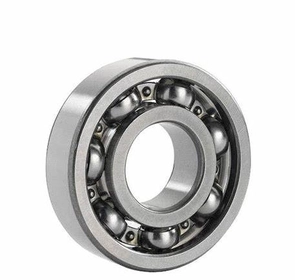Bearing Number
If you know the Bearing nomenclature procedure and its simple calculations, you can easily identify and decode Bearing details by its Bearing number. This post will discuss how to identify Bearings just from its Bearing Number so that you can easily handle various bearing tasks just by identifying the bearing.
How to Identify Bearings by its Bearing Number
A Bearing number contains many hidden information about the bearing in itself. The bearing no (pattern number) provide us enough details about the bearing silently.
Let us take an example to understand the bearing nomenclature more easily. Suppose, we have a bearing whose patt no is 6305ZZ. Let us divide it in sub components. Here ‘6‘ indicate bearing type. There are few companies which use their separate identifying nomenclature. However, most of them follow a common standard for bearing nomenclature
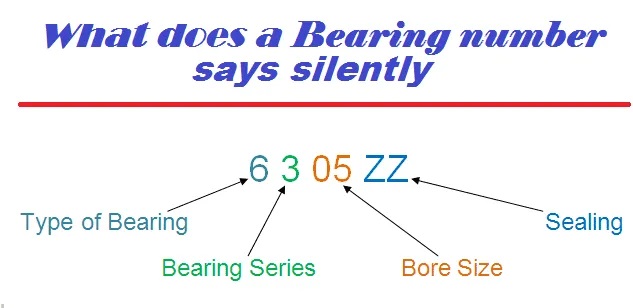
Fig. 1 – Bearing Number Nomenclature
Types of Bearings and Their Code
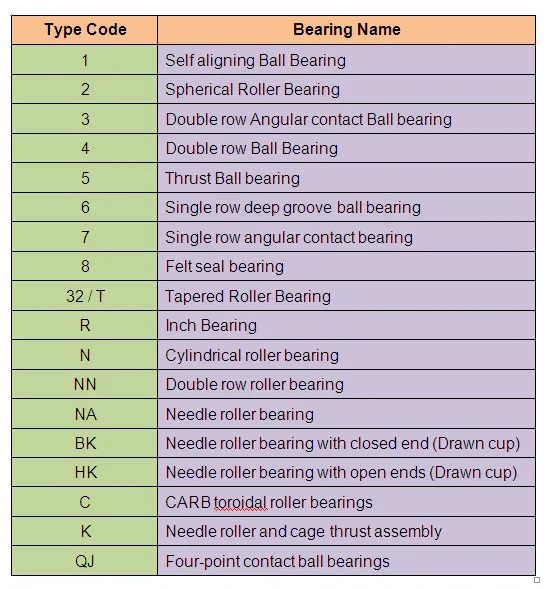
Fig. 2 – Types of Bearings and their Codes
Thus, we can easily identify now that in case of bearing 6305ZZ, the first digit ‘6‘ means the bearing type is ‘Single row deep groove ball bearing’.
In case of Inch bearings, the bearing’s first digit will be ‘R’. After ‘R’, the size of the bearing will be given in 1/16th of an inch. To understand it better, Lets take an example of Inch bearing. Suppose, we have R4-3RS bearing. Here, R4 means, it is an inch bearing whose bore size is 4/16th or you can say 1/4th of an inch.
Bearing Series and Their Code in Bearing Number
The second digit of a bearing patter number indicates the bearing series. Series of a bearing denotes the toughness of the bearing. They are:
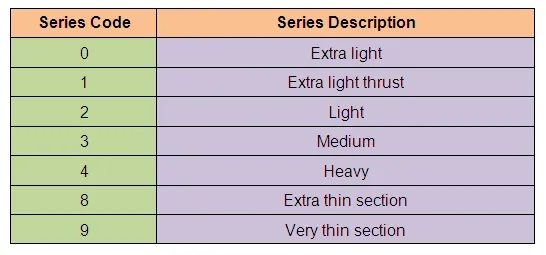
Fig. 3 – Series (Toughness) of Bearing
Thus, we can identify now that in case of bearing 6305ZZ, the second digit ‘3‘ means the bearing is of medium toughness.
Bore size of Bearing
The third and fourth digit of bearing patter number indicates the bore size of bearing. It is the inner diameter of the bearing and measured in millimeters. In general, the bore size is equal to five times the third and forth digit of bearing’s patter number. However, from ‘0’ to ‘3’, this formula does not imply. The bore size indicated by ‘0’ to ‘3’ are :
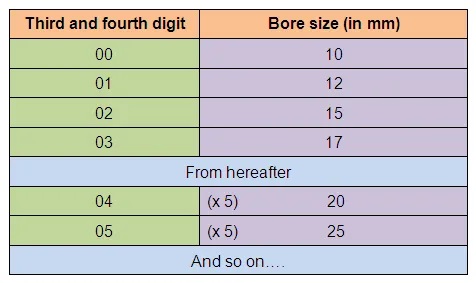
Note : In case there is no fourth digit, then the 3rd digit indicates the bore size in mm. For example: in case of bearing 636, the bore size of the bearing will be 6mm.
Thus, we can identify now that in case of bearing 6305ZZ, the third and fourth digit ‘05’ means the bearing’s bore size is 25 mm.
Shielding/Sealing/Specialty of Bearing
The last letters of the bearing indicates the availability/unavailability/type of shielding or sealing and other specialty in the bearing. The various types of indications are:
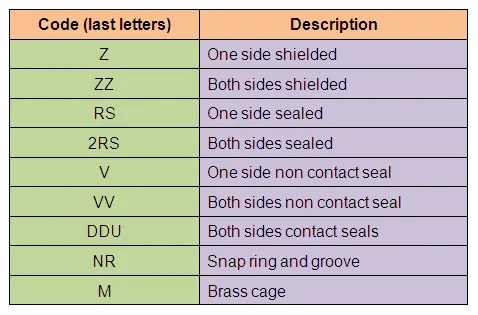
Thus, we can identify now that in case of bearing 6305ZZ, the last letters ‘ZZ’ means the bearing is shielded from both sides.
Coming to the conclusion, we can now easily decode bearing numeric details of most of the bearings. Here, Bearing 6305ZZ means “it is a Single row deep groove ball bearing having medium toughness, with a bore size of 25 mm and is shielded from both sides.
Interesting???? Isn’t it? Its fun to decode bearing number. Try some more bearings pattern no and check how accurate you are.
